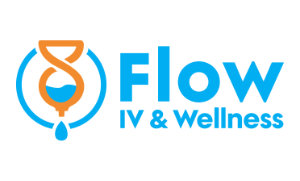
Ozone-based therapies are gaining popularity in regenerative medicine. If you’ve heard of ozone therapy or seen athletes post about EBOO therapy (Extracorporeal Blood Oxygenation and Ozonation) on social media, you might be wondering: what’s the difference between the two, and which is better?
Both EBOO and traditional ozone therapy use the power of ozone (O₃) to cleanse the blood and support cellular health, but they differ in their methods, intensity, and results. If you’re a professional athlete looking to reduce recovery time, or any high-performing adult focused on optimizing long-term health, understanding the distinction between these treatments can help you decide if one is right for you.
What Is Ozone Therapy?
Ozone therapy is a regenerative medical technique that introduces ozone gas into the body to promote healing, boost immunity, and neutralize harmful pathogens. It’s based on the principle that ozone, a molecule composed of three oxygen atoms, can act as a powerful oxidant that stimulates antioxidant activity, modulates inflammation, and improves oxygen metabolism at the cellular level.
There are several forms of traditional ozone therapy, including:
- Autohemotherapy: A small amount of blood is withdrawn, mixed with ozone, and re-infused into the body.
- Topical application: Ozonated oils or gas are applied to wounds or skin conditions.
- Ozone bagging or cupping: A limb or body part is enclosed in a bag or cup filled with ozone.
These methods have been widely used for decades. However, they are typically lower volume and shorter duration treatments compared to EBOO.
What Is EBOO Therapy?
EBOO (short for Extracorporeal Blood Oxygenation and Ozonation) is a modern therapeutic protocol that combines clinical-grade ozone infusion with advanced blood filtration. While ozone therapy is traditionally delivered in small, targeted doses, EBOO operates on a different level entirely: it treats a large volume of blood—up to two liters—in a continuous, real-time circuit that interfaces directly with your circulatory system.
What makes EBOO distinct isn’t just the ozone. It’s the precision of the delivery system and the integration of medical filtration. Rather than disrupting your body to trigger adaptation, as traditional ozone therapy often does, EBOO supports system-wide recalibration by working with your body’s most fundamental communication and transport network: your blood.
Key Differences Between EBOO and Traditional Ozone Therapy
While both EBOO and traditional ozone therapy rely on medical-grade ozone to influence biological processes, they are different in their scope, delivery, and effect. Below is a breakdown of the distinctions to consider when choosing the right therapy for your needs.
Blood Volume Treated
Traditional ozone therapy treats only a small sample of blood, typically between 100 and 200 milliliters. It is a more targeted, localized approach. In contrast, EBOO therapy processes up to 2 liters of blood during each session.
Circulatory Engagement
Traditional ozone therapy interacts with your bloodstream in short bursts. Whether through small-volume autohemotherapy or local insufflation, these sessions are brief and not continuous. EBOO, however, establishes a real-time, closed-loop circuit that continuously draws, ozonates, filters, and returns the blood.
Presence of Filtration
Filtration is not part of traditional ozone therapy. The blood is treated with ozone and then reintroduced, but no compounds are removed in the process. EBOO includes an advanced filtration stage that removes inflammatory proteins, cellular debris, and other byproducts circulating in your blood.
Duration of Treatment
Sessions for traditional ozone therapy typically last between 10 and 30 minutes, depending on the method used. EBOO sessions are longer, averaging 45 to 60 minutes, but the additional time allows for a more comprehensive intervention.
Treatment Frequency
Most clients benefit from a series of treatments rather than a single session. Weekly sessions of traditional ozone therapy for 4-6 weeks often produce the best results. EBOO protocols typically involve fewer sessions, often 3-4 treatments spaced 1-2 weeks apart, due to the more intensive nature of each treatment.
Ideal Applications
Traditional ozone therapy may be suitable for individuals new to ozone treatments or seeking gentle support after illness or injury. It can be beneficial for localized issues or periodic immune tuning. EBOO, on the other hand, is well-suited for individuals with high physical or cognitive demands, systemic inflammation, post-viral fatigue, or those seeking more consistent physiological output across demanding cycles.
EBOO vs. Ozone Therapy: Which One Should You Choose?
The right therapy depends on your individual goals, your baseline health, and the level of intensity you want for your body’s systems. Traditional ozone therapy may be a good option if you’re looking for a gentle, introductory experience, particularly for general immune support, localized issues, or periodic maintenance. It offers a gentler entry point and can be useful for those testing how their body responds to oxidative therapies.
EBOO therapy is better suited for individuals looking for a more comprehensive treatment. With its high-volume circulation, real-time filtration, and systemic reach, EBOO is ideal if you’re focused on performance consistency, deeper recovery, or managing broader inflammatory load. It’s not simply a stronger version of ozone therapy. It’s a different category altogether.
Take Control of Your Recovery With EBOO and Ozone Therapy Options in South Florida
If you’re ready to take a more strategic approach to recovery and long-term performance, Flow IV Infusion Therapy offers both traditional ozone treatments and advanced EBOO therapy to meet your needs. You can start with a standard ozone session or commit to a four-session EBOO package. Both are designed to work with your physiology, not against it. Every treatment is delivered under the guidance of clinical supervision, with your goals and schedule in mind.
To get started, call (954) 546-3905 or book your consultation online. Flow IV serves Pembroke Pines, Weston, Davie, Sunrise, Miramar, Fort Lauderdale, and surrounding areas in Broward, Miami-Dade, and Palm Beach counties, offering in-clinic and mobile services tailored to your lifestyle.
Share:
More Posts

What If Your Body Could Order Uber for Vitamins?
It’s easy to see why so many people prefer services that come directly to their homes. With just a few clicks, you can have groceries,

Top 5 Benefits of IV Hydration for Athletes in Florida Heat
Staying at peak performance isn’t just about training harder. It’s also about how you recover, your endurance, and fueling your body properly. If you’re an

Top Nutrients Found in the Best IV Drips and What They Do for Your Body
Staying energized, healthy, and focused can be challenging in today’s fast-paced world. Even with a balanced diet, many of us struggle to get the optimal

Hangover IV Therapies: How They Work & What You Should Know
We’ve all been there—celebrating a little too much only to wake up with a pounding headache, nausea, dizziness, and fatigue. Hangovers don’t just disrupt your

